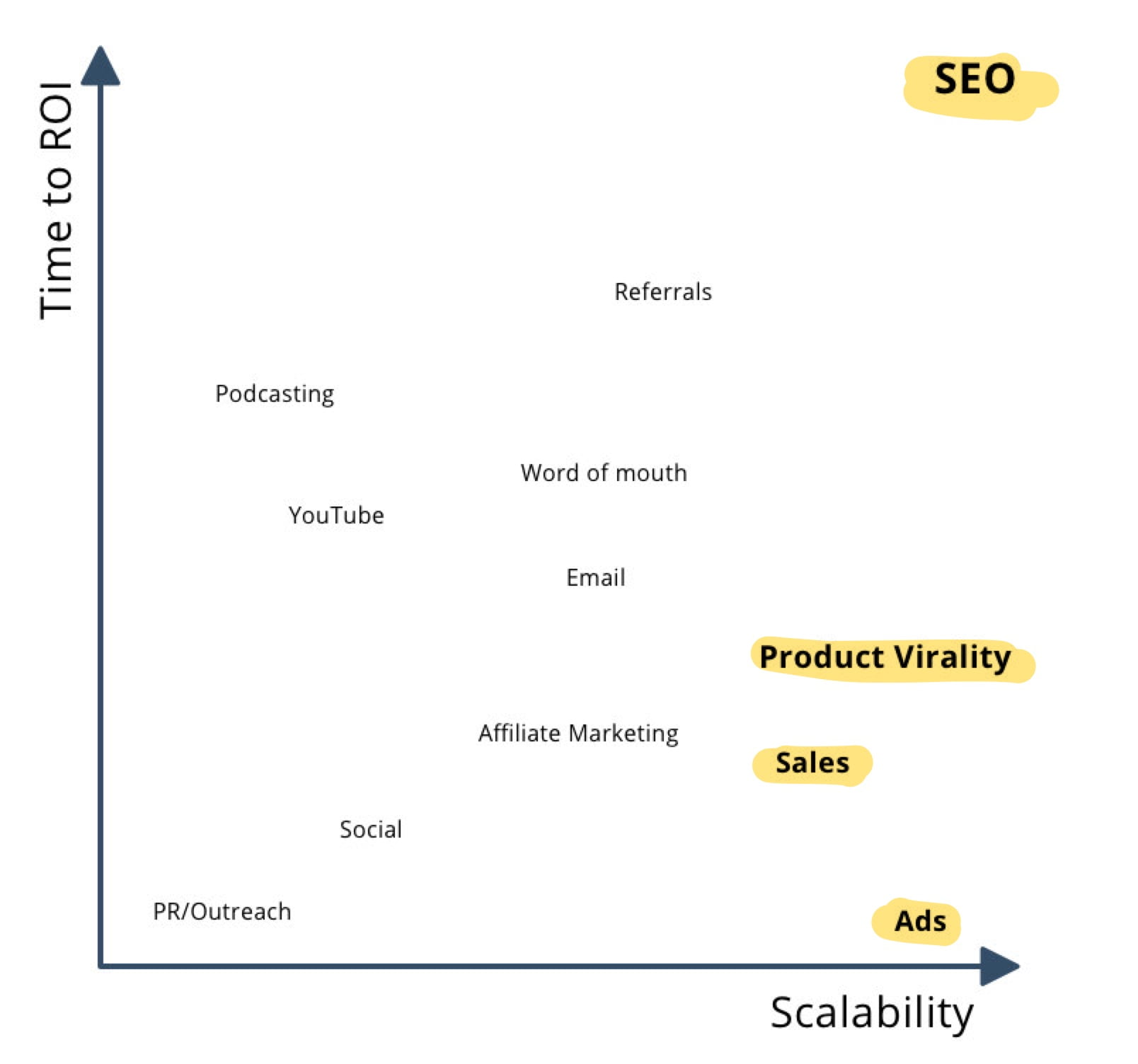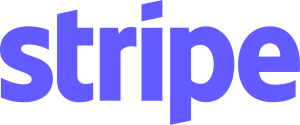Scalable Customer Acquisition – SEO, Ads, Sales & Virality
Customer acquisition for a product that has reached product-market fit is easy. The real problem is that most customer acquisition channels aren’t truly scalable – only 4 are.
The unscalable channels are still at the heart of every business – especially when starting out – but if you want customer acquisition where the return increases over time (to build growth loops, flywheels, or whatever buzzwords you want to use 😅), you need scale.
What Is A Customer Acquisition Channel?
Simply put, these are the way customers buy your products or sign up for free trials, etc. It’s where you get your customers from…
To cut right to the chase, the only truly scalable channels are:
The 4 Scalable Customer Acquisition Channels
Search Engine Optimization
SEO (search engine optimization) is the science (and, in some ways, art) of driving organic traffic from search engines, namely Google. Since you’re reading this blog, it’s safe to assume that you’re very familiar with the topic. 😄
Examples:
- Quora
- Yelp
- YouTube
- Spotify
- Netflix
- Amazon
- The NY Times
- Medium
Online Advertising
Online advertising regardless of the medium – whether it’s Google Ads, Facebook, Twitter, or other platforms. It’s important to note the distinction between advertising in general and online advertising. Offline advertising just doesn’t provide good targeting at all. Sure you can pick & choose which TV channel to advertise on or which magazine to buy an advertisement in but only platforms like Google and Facebook allow you to target individual people based on interests, previous interactions with your brand, and more.
Examples:
- Amazon
- Expedia/Tripadvisor/Booking
- Casper
- Warby Parker
- Allbirds
Sales
Sales comes in many forms – outbound sales teams, business development, retail. Simply put, it’s sales when a product/service is sold through at least one touchpoint that includes another human.
Apple sells through retail stores, software companies like Salesforce have sales teams, and even Slack recently added enterprise sales (though this is not their primary user acquisition channel)…
Examples:
- Microsoft
- Tesla
- Apple
- Salesforce
Product Virality
Product virality is the holy grail of growth for SaaS businesses.
It’s built on the idea that the product spreads because existing users invite more users. In some cases, this is driven by referral/affiliate programs though often the best examples are just when happy current users refer new users, that continue doing the same – therefore creating a “growth-loop”.
Examples:
- All major social networks (i.e. Facebook, Twitter, Instagram, etc.)
- Trello, Jira, and Atlassian’s other products
- Basecamp
- Slack
- Dropbox
Scaling Customer Acquisition
All scalable customer acquisition channels have three characteristics in common:
- They’re scalable (obviously:)
- They yield good returns (ROI) over time
- They allow you to target the right audience
Customer acquisition channels can really only push a product across all growth stages if all three criteria are met.
Beyond this, it’s also useful – especially when budgeting & choosing channels to invest in based on your company’s current stage – to consider the scalability vs. time to ROI for each customer acquisition channel:

I featured some other customer acquisition channels above as well so you can see where they stand when compared to the four truly scalable ones.
This is obviously very abstract and varies depending on the product, but the actual comparison of the channels holds true in most situations:
- Product virality can yield great returns quickly but requires time to start working.
- Sales works even faster than virality but a system still needs to be in place + people need to be hired.
- SEO & content marketing takes the longest but is the most scalable and yields exponential returns.
- Ads are theoretically instant & can start bringing in customers almost immediately.
Note: As the time to ROI decreases, the investment required increases. SEO has the longest time to ROI (when compared to other channels, it can work fairly quickly), whereas it has relatively low costs besides human capital/sweat equity.
Advertising and other channels disappear when the money stops coming in. Sales stops working the moment your sales team does.
The sole outlier here is product virality which scales immediately without additional cost (apart from investment in product development) which is why it’s perfect when paired with SEO & content marketing.
Why Aren’t Other Customer Acquisition Channels Scalable?
Now that we’ve taken a look at the four truly scalable channels – you might be wondering, why is it that other channels can’t be scaled in the same way?
Well – let’s take a look…
Podcasts: although they make for great assets in other forms of marketing, on their own they take a long time to reach a targeted audience and the reach of a single episode is limited.
Social, Outreach & PR: I’d usually group these three together. While definitely worth investing in, they are not repeatable/scalable and returns are not reliable or consistent.
Choosing The Right Channel – Customer Acquisition Cost 💰
All customer acquisition channels, including the “unscalable” ones have their advantages and sacrifices (costs). In reality, you don’t make it with just one channel, the best startups start with one channel and eventually grow into others while more mature companies (with enough cashflow) already use all of the four truly scalable ones as well as social media (oftentimes even without measuring the ROI).
What makes a channel the right one for your business at its current stage is often as easy as choosing the path of least resistance. When looking at customer acquisition costs (CAC), you always want the channel that will yield the perfect balance between customer lifetime value (retention) and CAC. That being said, customer lifetime value on its own can be a ceiling – if your CLTV is too low, you wouldn’t be able to justify certain channels like hiring a sales team…
In our work with clients, we usually aim for a customer acquisition cost of between 1/3 and 2/3 (if not lower) of the product’s customer lifetime value (but this varies heavily based on the product itself).
👋 Looking for input from a team that’s worked with category-leading companies – possibly like yours? We’re here and always happy to help! Use the contact widget in the bottom right-hand corner to get in touch or apply to work with us here.







